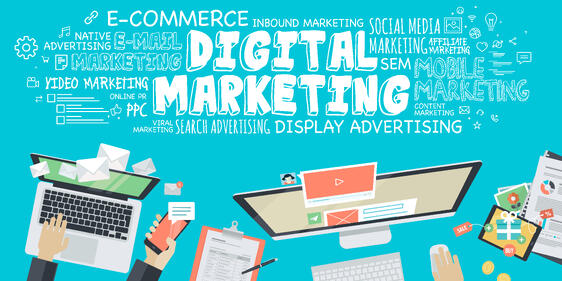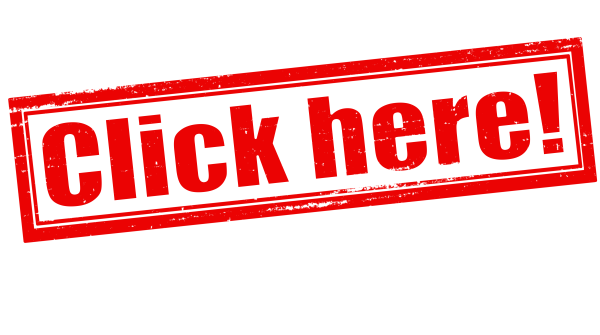Last month I started this series on Best Practices for Digital Strategy. Read the first post here. Before I get into today's best practice, I want to share an article I recently read in the Harvard Business Review. It contains spot-on advice to make sure you are asking the right questions when developing your digital marketing strategy - to be more than just attention-grabbing online. From the article:
"What every institution needs — and what every leader needs to develop — before a “digital strategy” is a human strategy. If you want to matter to people, you must do more than merely win their fickle, fleeting, frenzied attention. You must help them develop into the people they were meant to be. When you do, maybe, just maybe, they’ll reward you. With something greater than their grudging, wearied attention. Their lasting respect, enduring trust, and undying gratitude."
Good reminder that the best marketers remember that they are interacting with humans, and best businesses exist to help human life flourish, not simply make a profit. Enough of your PSA of the day... on to best practices!

The digital marketing world can be overwhelming. There are so many possible tactics, types of sites, devices and more that it can be hard to find your way as a brand. Plus it is so different than off-line traditional marketing paths, marketers may often feel like they do not know where to start. It can seem like you're learning a whole new language at times. It can be especially tough in the B2B space (where we specialize) where websites are not very sophisticated. But I'm hoping that this series can provide some marketing principles to simplify what can seem like a daunting task, and empower marketers to move forward.
Today let's focus on creating compelling Calls-to-Action (CTA). Since you have selected your KPIs (Key Performance Indicators) by asking the right questions, you are ready to determine how to best achieve those goals. A major part of that is developing compelling calls-to-action to run in your ads or on your site. Usually a button or within a banner, the CTA tells your prospect about your valuable offer or content that's available if they take the required action. Here's another definition of CTA from our favorite web platform, Hubspot: "A CTA is the link between the regular content that your potential customer is interested in, and a page with a more high-value offer on it (the landing page) that is relevant and interesting enough to persuade your visitor to complete a short form." In short, it's the carrot you dangle, the means to get your prospect turned into a lead, and the way to start a relationship with them - keeping in mind the whole time they are a human! (see above)
 Now the main thing to consider with CTAs is that the offer is compelling and valuable to your prospect. If you are going to ask for their contact information, what you are offering must be valuable enough to them to share their info with you. Examples of offers would be content like a free eBook or webinar. If it's software perhaps you offer a free 1 week trial. Make sure it is something they cannot get anywhere else, ie if they can get a free demo of software on your site, then don't offer that in the CTA. Other examples of CTAs may be "make an appointment," "get a free consultation," or "25% off." Remember, the better the offer, the more likely you are to garner the desired action. "Click here" is not very compelling and thus will likely not get much of a response.
Now the main thing to consider with CTAs is that the offer is compelling and valuable to your prospect. If you are going to ask for their contact information, what you are offering must be valuable enough to them to share their info with you. Examples of offers would be content like a free eBook or webinar. If it's software perhaps you offer a free 1 week trial. Make sure it is something they cannot get anywhere else, ie if they can get a free demo of software on your site, then don't offer that in the CTA. Other examples of CTAs may be "make an appointment," "get a free consultation," or "25% off." Remember, the better the offer, the more likely you are to garner the desired action. "Click here" is not very compelling and thus will likely not get much of a response.
Once the offer is determined, here are a few things to consider in developing the actual CTA to run on your site and/or banner ads. CTAs should be:
- Aesthetically pleasing with copy that compels visitor to click the offer
- Short: A couple of words is best, no more than five is what you should shoot for
- Action-oriented: Start with a verb like "Download" or "Register"
- Located in an easy-to-find place that follows organically from the flow of copy on the webpage
- In a contrasting color from the scheme of the rest of webpage, yet still looks like it fits within design of overall site
- Big enough to see from a distance, but not so huge as to be a distraction from the main content on the page
- Clear and easy to understand: Be sure to state exactly what the visitor will receive if they click on the CTA and go to the landing page
That's a start for now on creating CTAs that generate new relationships you can begin nurturing. Coming up next: Landing Page and Form best practices. Thanks for reading!
Tags:
good media ideas, digital marketing, digital media buying, best practices, CTAs, call-to-actionMon, Mar 23, 2015 @ 15:03 PM





Comments